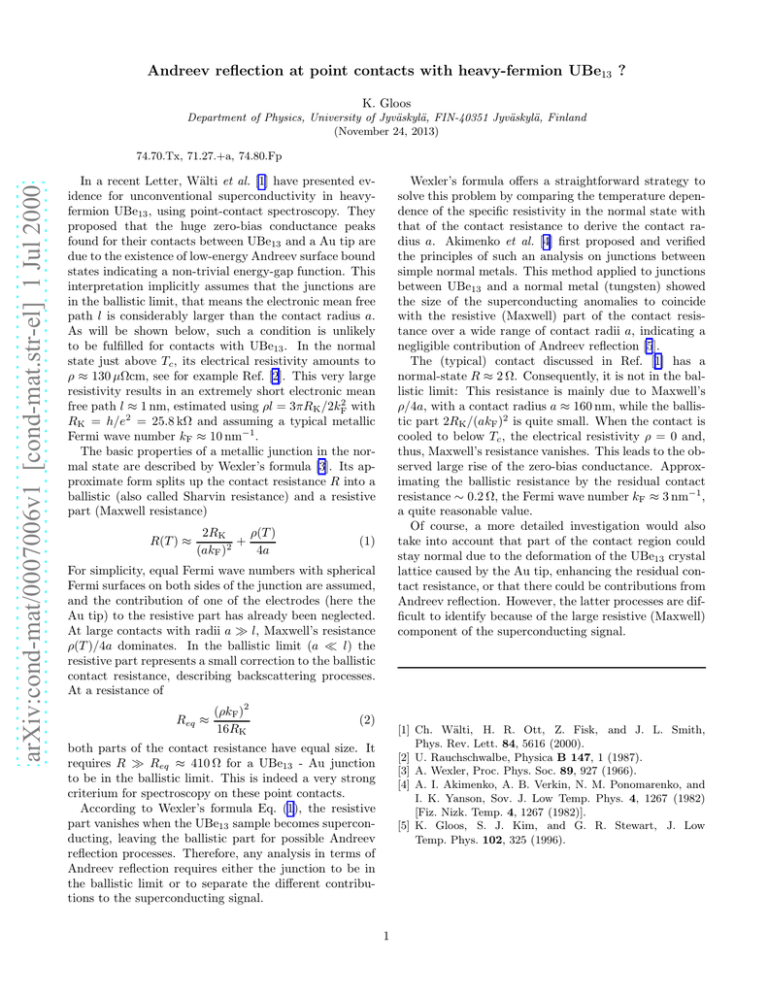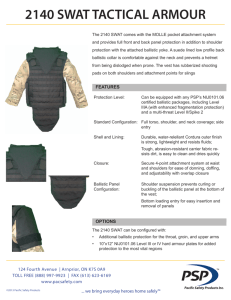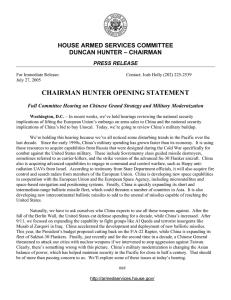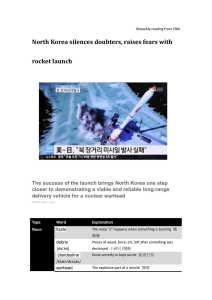Andreev reflection at point contacts with heavy
advertisement

Andreev reflection at point contacts with heavy-fermion UBe13 ? K. Gloos Department of Physics, University of Jyväskylä, FIN-40351 Jyväskylä, Finland (November 24, 2013) arXiv:cond-mat/0007006v1 [cond-mat.str-el] 1 Jul 2000 74.70.Tx, 71.27.+a, 74.80.Fp In a recent Letter, Wälti et al. [1] have presented evidence for unconventional superconductivity in heavyfermion UBe13 , using point-contact spectroscopy. They proposed that the huge zero-bias conductance peaks found for their contacts between UBe13 and a Au tip are due to the existence of low-energy Andreev surface bound states indicating a non-trivial energy-gap function. This interpretation implicitly assumes that the junctions are in the ballistic limit, that means the electronic mean free path l is considerably larger than the contact radius a. As will be shown below, such a condition is unlikely to be fulfilled for contacts with UBe13 . In the normal state just above Tc , its electrical resistivity amounts to ρ ≈ 130 µΩcm, see for example Ref. [2]. This very large resistivity results in an extremely short electronic mean free path l ≈ 1 nm, estimated using ρl = 3πRK /2kF2 with RK = h/e2 = 25.8 kΩ and assuming a typical metallic Fermi wave number kF ≈ 10 nm−1 . The basic properties of a metallic junction in the normal state are described by Wexler’s formula [3]. Its approximate form splits up the contact resistance R into a ballistic (also called Sharvin resistance) and a resistive part (Maxwell resistance) R(T ) ≈ 2RK ρ(T ) + (akF )2 4a Wexler’s formula offers a straightforward strategy to solve this problem by comparing the temperature dependence of the specific resistivity in the normal state with that of the contact resistance to derive the contact radius a. Akimenko et al. [4] first proposed and verified the principles of such an analysis on junctions between simple normal metals. This method applied to junctions between UBe13 and a normal metal (tungsten) showed the size of the superconducting anomalies to coincide with the resistive (Maxwell) part of the contact resistance over a wide range of contact radii a, indicating a negligible contribution of Andreev reflection [5]. The (typical) contact discussed in Ref. [1] has a normal-state R ≈ 2 Ω. Consequently, it is not in the ballistic limit: This resistance is mainly due to Maxwell’s ρ/4a, with a contact radius a ≈ 160 nm, while the ballistic part 2RK /(akF )2 is quite small. When the contact is cooled to below Tc , the electrical resistivity ρ = 0 and, thus, Maxwell’s resistance vanishes. This leads to the observed large rise of the zero-bias conductance. Approximating the ballistic resistance by the residual contact resistance ∼ 0.2 Ω, the Fermi wave number kF ≈ 3 nm−1 , a quite reasonable value. Of course, a more detailed investigation would also take into account that part of the contact region could stay normal due to the deformation of the UBe13 crystal lattice caused by the Au tip, enhancing the residual contact resistance, or that there could be contributions from Andreev reflection. However, the latter processes are difficult to identify because of the large resistive (Maxwell) component of the superconducting signal. (1) For simplicity, equal Fermi wave numbers with spherical Fermi surfaces on both sides of the junction are assumed, and the contribution of one of the electrodes (here the Au tip) to the resistive part has already been neglected. At large contacts with radii a ≫ l, Maxwell’s resistance ρ(T )/4a dominates. In the ballistic limit (a ≪ l) the resistive part represents a small correction to the ballistic contact resistance, describing backscattering processes. At a resistance of Req ≈ (ρkF )2 16RK (2) [1] Ch. Wälti, H. R. Ott, Z. Fisk, and J. L. Smith, Phys. Rev. Lett. 84, 5616 (2000). [2] U. Rauchschwalbe, Physica B 147, 1 (1987). [3] A. Wexler, Proc. Phys. Soc. 89, 927 (1966). [4] A. I. Akimenko, A. B. Verkin, N. M. Ponomarenko, and I. K. Yanson, Sov. J. Low Temp. Phys. 4, 1267 (1982) [Fiz. Nizk. Temp. 4, 1267 (1982)]. [5] K. Gloos, S. J. Kim, and G. R. Stewart, J. Low Temp. Phys. 102, 325 (1996). both parts of the contact resistance have equal size. It requires R ≫ Req ≈ 410 Ω for a UBe13 - Au junction to be in the ballistic limit. This is indeed a very strong criterium for spectroscopy on these point contacts. According to Wexler’s formula Eq. (1), the resistive part vanishes when the UBe13 sample becomes superconducting, leaving the ballistic part for possible Andreev reflection processes. Therefore, any analysis in terms of Andreev reflection requires either the junction to be in the ballistic limit or to separate the different contributions to the superconducting signal. 1




